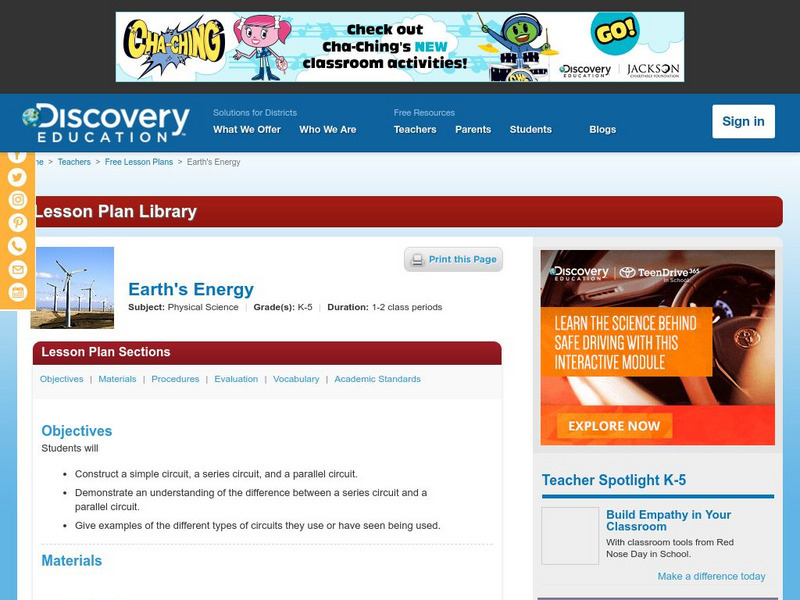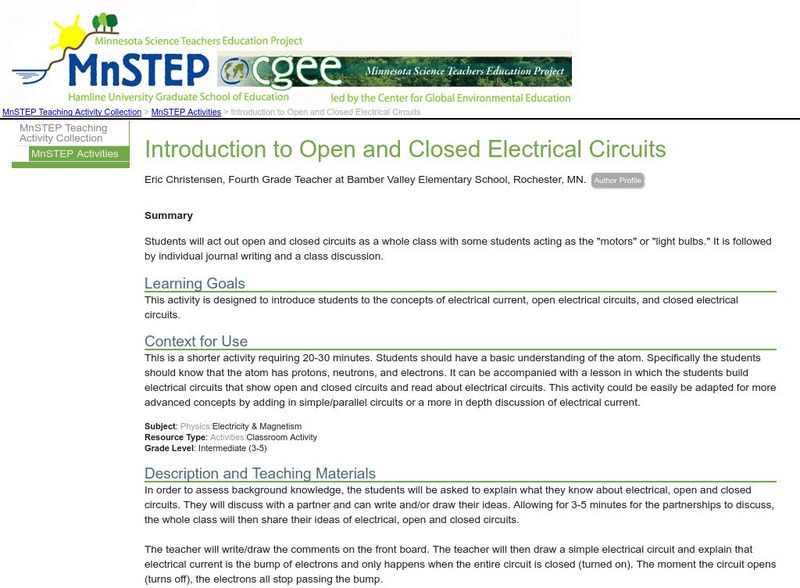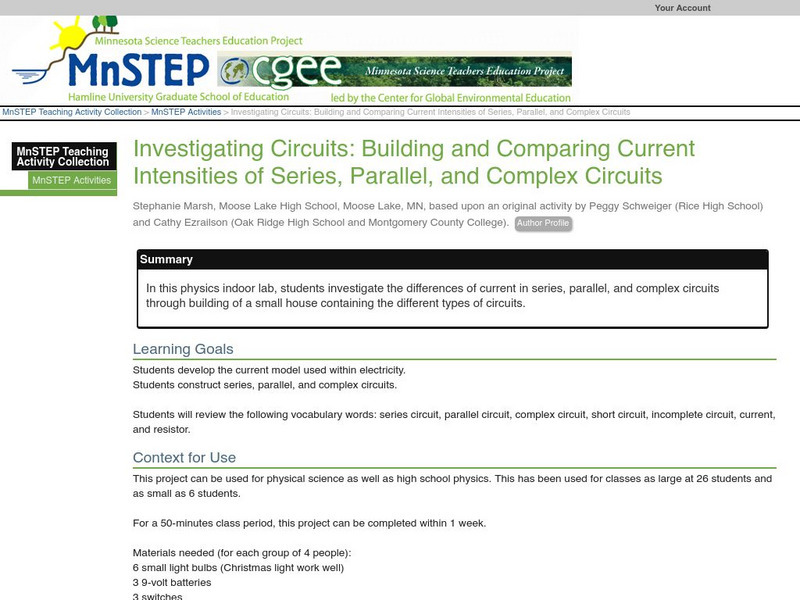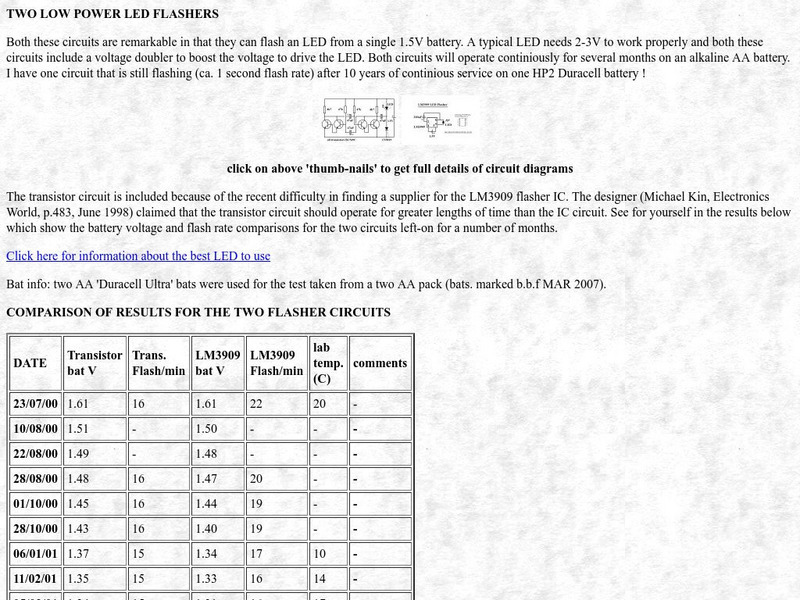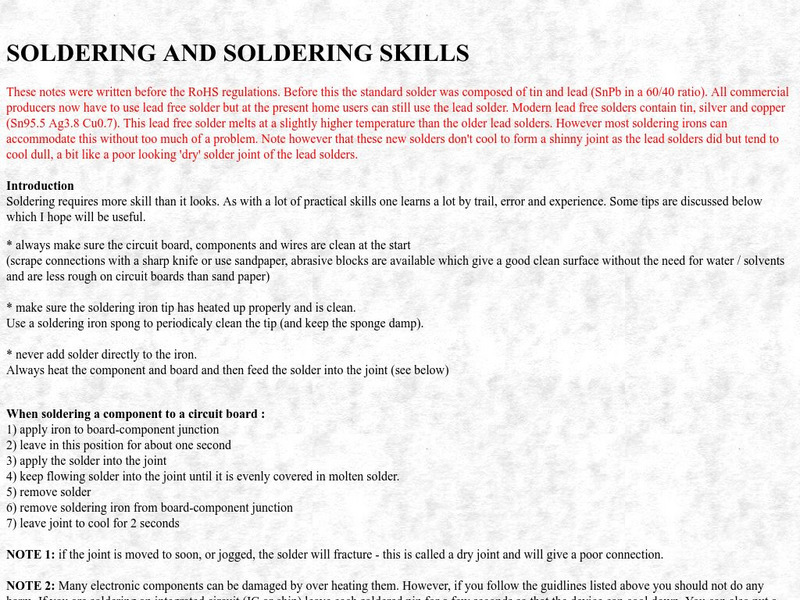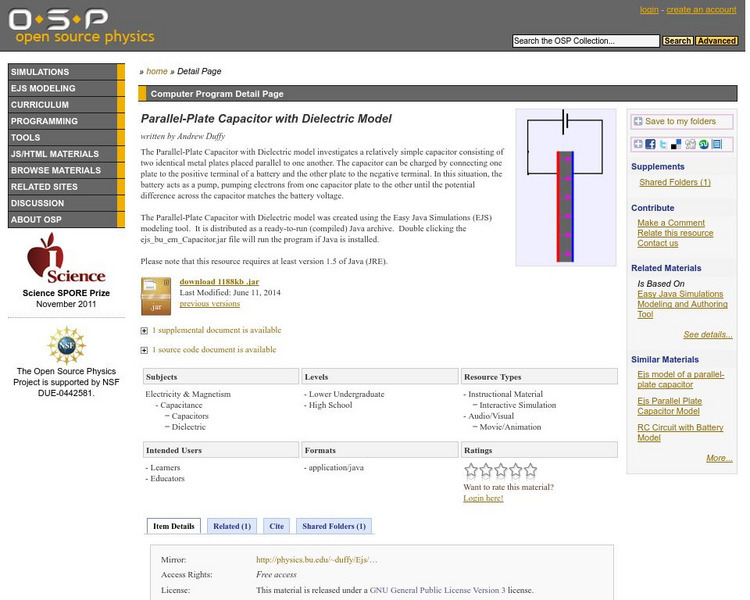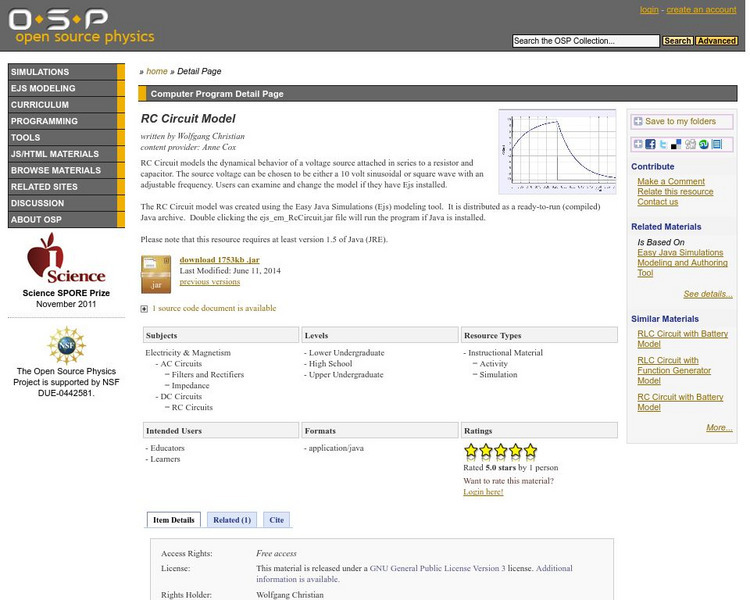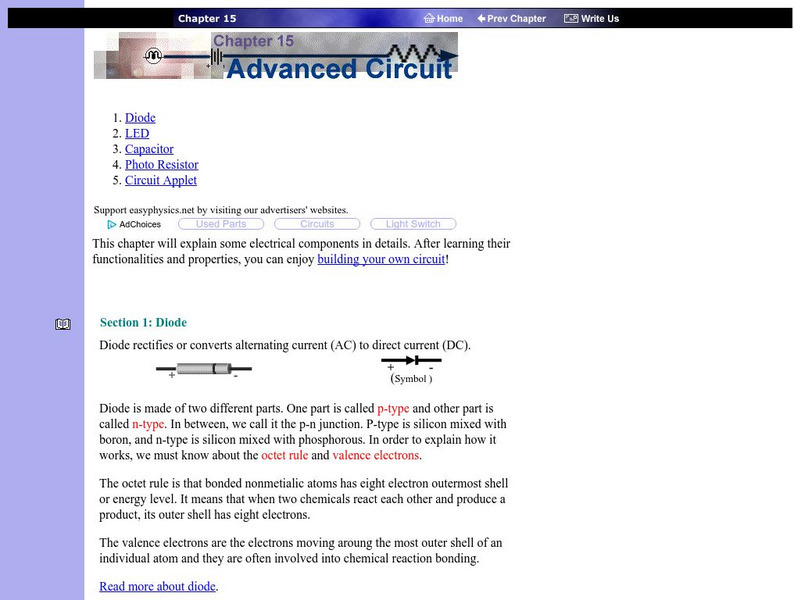TeachEngineering
Teach Engineering: From Sunlight to Electric Current
The lesson will first explore the concept of current in electrical circuits. Current will be defined as the flow of electrons. Photovoltaic (PV) cell properties will then be introduced. This will lead to the principle of "Conservation of...
Discovery Education
Discovery Education: Earth's Energy
A hands-on lesson for helping students understand simple circuits, series circuits, and parallel circuits, and the differences between the three.
National Geographic
National Geographic: Building Circuits
In this lesson, students build series and parallel circuits and test their conductivity. Includes handouts with diagrams, and a vocabulary list with definitions.
Physics Classroom
The Physics Classroom: Current Electricity: Combination Circuits
Explains what a combination circuit is, reviews the features of series and parallel circuits, and demonstrates how to analyze combination circuits. Includes detailed examples and some problems for students to try. There is also a link to...
BBC
Bbc Schools: Ks2 Bitesize: Science: Physical Processes: Electrical Conductors
Find out which material will save Steve from getting shocked by the electric eels. Following the activity, read more about electrical conductors, and then take a quick quiz to check for understanding.
E-learning for Kids
E Learning for Kids: Science: Norway: What Happens When Parts of a Circuit Are Changed?
Join Mathias as he takes care of the electrical problems in his uncle's office. Help him figure it out, and fix the lights.
Science Education Resource Center at Carleton College
Serc: Investigate Electric Circuits Through Construction and Illustration
For this physics lesson 4th grade students investigate electrical circuits in greater depth than the FOSS unit used in a prior grade in school. Students become familiar with a computer simulation allowing them greater choices of...
Science Education Resource Center at Carleton College
Serc: Investigating Electricity: Building Circuits in Elementary Science Class
In this exploration activity, students compare the difference between series circuits and parallel circuits using wire, light bulbs, and D batteries.
Science Education Resource Center at Carleton College
Serc: Introduction to Open and Closed Electrical Circuits
This activity introduces learners to the concepts of electrical current and open and closed circuits. Students will act out open and closed circuits as a whole class with some learners acting as the "motors" or "light bulbs."
Science Education Resource Center at Carleton College
Serc: Lighting the Way: Electrical Circuits and Lamp Wiring
Through a series of self-guided activities, students will explore basic electrical circuits and then build a working model of a circuit through the process of wiring a lamp. They will understand the flow of electrons through a circuit,...
Science Education Resource Center at Carleton College
Serc: Investigating Batteries: Building an Electrolytic Cell
For this inquiry, students will attempt to build an electrolytic cell which will cause a bulb to turn on then diagram the set-up. Included in this lab, students will experience voltage, solve a problem using the Nernst equation, and...
Science Education Resource Center at Carleton College
Serc: Introduction to Electricity by Creating a Light Up Quiz Board
In this activity, students will learn how to create a simple circuit. They will create a matching quiz board that will light up when the correct pair is selected using electricity vocabulary from the text.
Science Education Resource Center at Carleton College
Serc: Comparing Current Intensities of Series, Parallel, and Complex Circuits
Students will investigate the differences of current in series, parallel, and complex circuits through the construction of a small house containing the different types of circuits.
Science Education Resource Center at Carleton College
Serc: Electric Circuits Guided Inquiry
An electrical circuit guided inquiry where students investigate what an electric circuit is, the main parts of a circuit and the difference between series and parallel circuits. Students groups create a circuit using materials provided...
Creative Science Centre
Creative Science Centre: Two Low Power Led Flashers
Explains the design of two circuits that can flash an LED from a single 1.5V battery. A typical LED needs 2-3V to work properly and both these circuits include a voltage doubler to boost the voltage to drive the LED. Both circuits will...
Creative Science Centre
Creative Science Centre: Led's
There are so many different types of LEDs on the market (even of the same size and color), how do you tell the difference between them and which one you should use for your particular application? The simple tests descibed here compare...
Creative Science Centre
Creative Science Centre: Soldering and Soldering Skills
Soldering requires more skill than it looks. As with a lot of practical skills one learns a lot by trail, error and experience. Some tips are discussed here. These notes were written before regulations were introduced requiring solder to...
Wikimedia
Wikipedia: Series and Parallel Circuits
Wikipedia offers information on two basic ways of wiring components in electrical circuits, series and parallel circuits.
American Association of Physics Teachers
Com Padre Digital Library: Open Source Physics: Parallel Plate Capacitor
A simulation investigating a parallel-plate capacitor which is charged by connecting one plate to the positive end of a battery, and the other plate to the negative end. The battery sends electrons from one capacitor plate to the other...
American Association of Physics Teachers
Com Padre Digital Library: Open Source Physics: Rc Circuit Model
An electrical circuit simulation modeling the behavior of a voltage source attached in a series to a resistor and capacitor.
Open Curriculum
Open Curriculum: Capacitance and Inductance
Students learn about capacitors and inductors and their role in electrical circuits.
Other
Easyphysics: Chapter 15 the Circuit
Learners investigate circuits. Some topics examined are a photo resistor, capacitor, and diode. The resource includes a circuit applet.
Other
Easyphysics: Chapter 14 Basic Circuit
Learners investigate circuits. Some topics examined are a series circuit, parallel circuit, and Joule?s law. The resource includes practice problems with solutions and a chapter quiz.
National High Magnetic Field Laboratory
Magnet Academy: Oscillator
Oscillators are a type of circuit found in many types of electronic equipment, including clocks, radios and computers. (Java tutorial)



